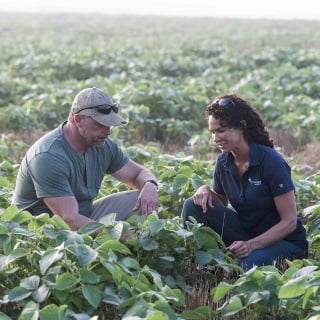Sources: David Widmar and Brent Gloy, Co-Founders of Agricultural Economic Insights
While many grain producers have enjoyed several seasons of high profitability, an increase in supply and weakening global demand have driven the prices of commodities down to prices much closer to the cost of production. Here are ways you can overcome the “whiplash” this may have created in your current marketing plan and establish a sustainable approach for today, and tomorrow.
Shift Your Focus
When it comes to marketing crops, beware the influence of “hindsight bias” – which is making decisions today based on what you’ve observed in the market in the recent past. Instead, focus on making attainable decisions based on what’s best for your operation in the current environment—all while keeping the future in mind.
For example, focusing on consistently selling your commodity at the highest price could lead to holding onto bushels while you wait for prices to go back up. Because that outcome is uncertain (and influenced by so many external factors) you might lose opportunities to generate needed revenue for your operation. This could lead to cash-flow problems if you don’t have a war chest of working capital readily available.
Instead of focusing on selling at the highest price, focus on how many times you can consistently sell bushels at a profit throughout your career. This is an attainable metric you can track over time, year over year.
Prioritize Quality Decisions Over Quality Outcomes
Every producer wants to make the best decisions for his or her operation. While it stands to reason that “good” decisions lead to “good” outcomes, and “bad” decisions lead to “bad” outcomes, the reality is that at times (and for reasons outside our control) “good” decisions can have “bad” outcomes, and “bad” decisions can have “good” outcomes. As a result, hindsight bias may mean you learned the wrong lessons from the past.
This can make evaluating your decisions even more challenging, especially if strategies that worked well previously won’t stand up in today’s market.
You can overcome this by focusing on the quality of your decisions over the quality of the outcome.
To start this process, you must first know your costs. This includes:
- Economic Costs Per Bushel – The true cost of conducting all business for your operation.
- Accounting Costs Per Bushel – Costs produced by your record-keeping system, which includes tax depreciation.
- Cash Flow Costs Per Bushel – Costs you must meet in order to pay the bills.
Next, answer the following questions:
- Which cost do I need to meet (at a minimum) through my marketing plan?
- What prices are currently available?
- What decisions are available to me?
Use the answers to these questions to create a clear objective and make quality decisions focused on the needs of your operation at that point in time.
For example, if not meeting your cash flow costs will put you in a tough financial situation and current prices meet that cost, selling may be the right decision for your operation.
Be mindful not to make extreme decisions that lead to extreme outcomes. Balance opportunities to achieve upsides with protecting yourself from negative outcomes.
Adjust Your Habits and Routines
Good habits can make a big impact on your operation, and this same principle applies to your marketing plan. Once you’ve established a clear objective to guide your decision-making, revisit the following cornerstone habits of grain marketing, then make subtle adjustments to help you in the long run.
1. Identify your current processes.
What are the tools, methods, and timing you’ve relied on over the past several years? Do an inventory of these areas and then step back and assess if anything is missing, or if there are new opportunities or tools you should adopt in the current environment.
2. Identify your pain points.
Every producer gets stuck somewhere in the decision-making process. Maybe you spend so much time analyzing the best action that you are exhausted when the time comes to pull the trigger on that decision? Whatever your pain point may be, its important to identify it now and put tools in place to mitigate it when the time comes to act.
3. Remove barriers.
Create rules that you will use to guide your decision-making in the future. For example, “I only market X percent of my grain before the first of July.” With such rules in place, you can confidently make decisions and take quick action when you see an opportunity in the market.
4. Learn constantly.
Think about your current habits and what you know. Identify something you want to learn more about in the year ahead. Challenging yourself to learn continuously will help you improve your habits over time.
By using these resources and putting measurable objectives in place, you can avoid pursuing the wrong goals for your marketing plan. Meanwhile, making small adjustments in your habits and routines will make grain marketing easier for you and your operation.
This article is intended for informational purposes only. This is not legal or tax advice. Please consult with an attorney or tax professional before taking any action. For additional information and insights on this topic, view our most recent webinar with Agricultural Economic Insights and Senior Financial Officer, Eric Hess.






